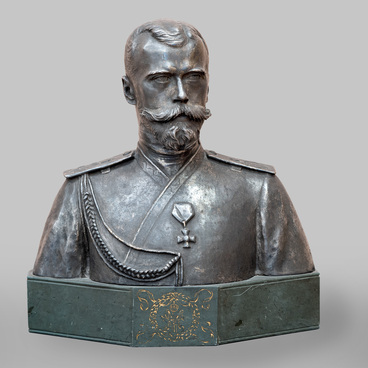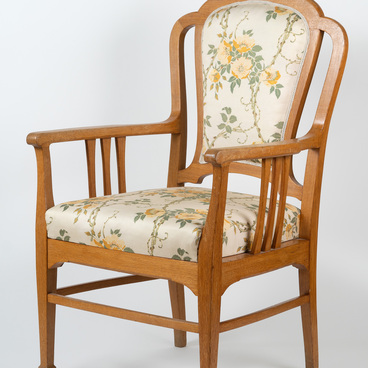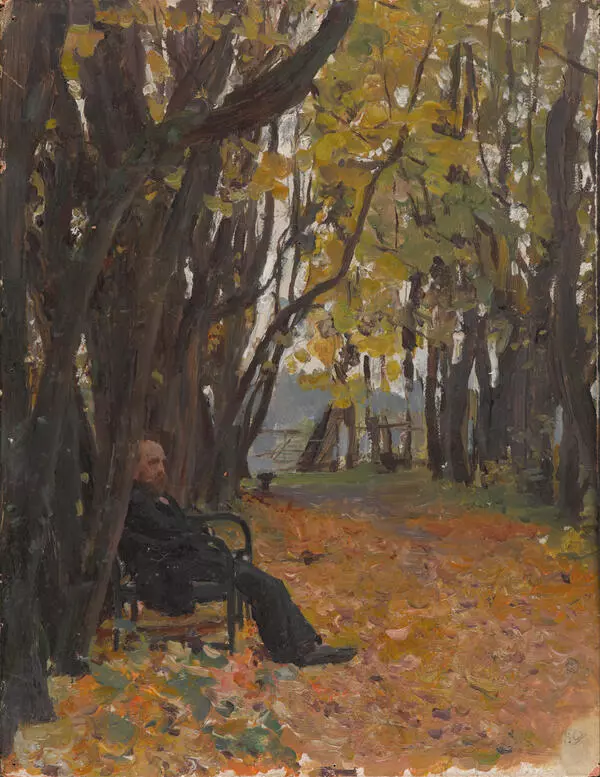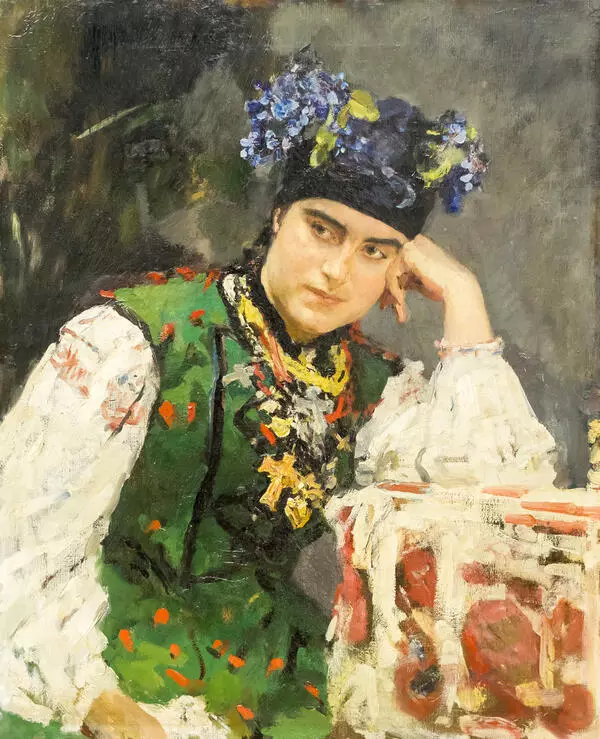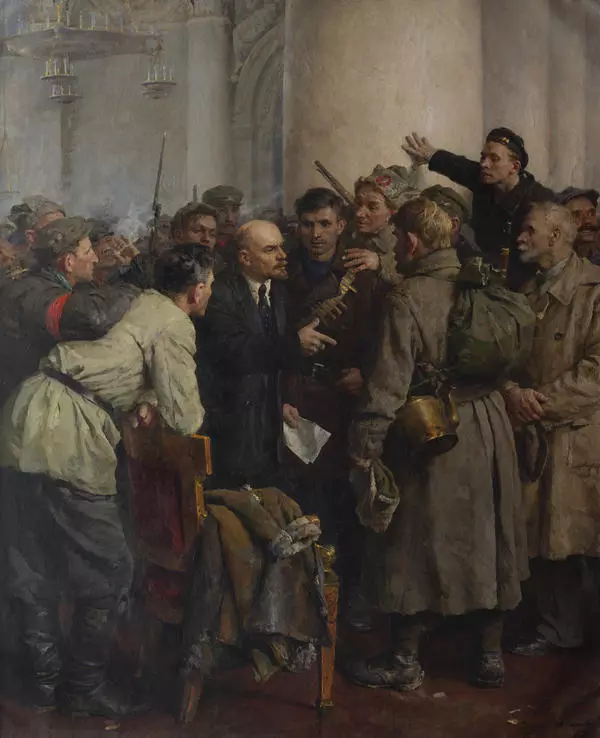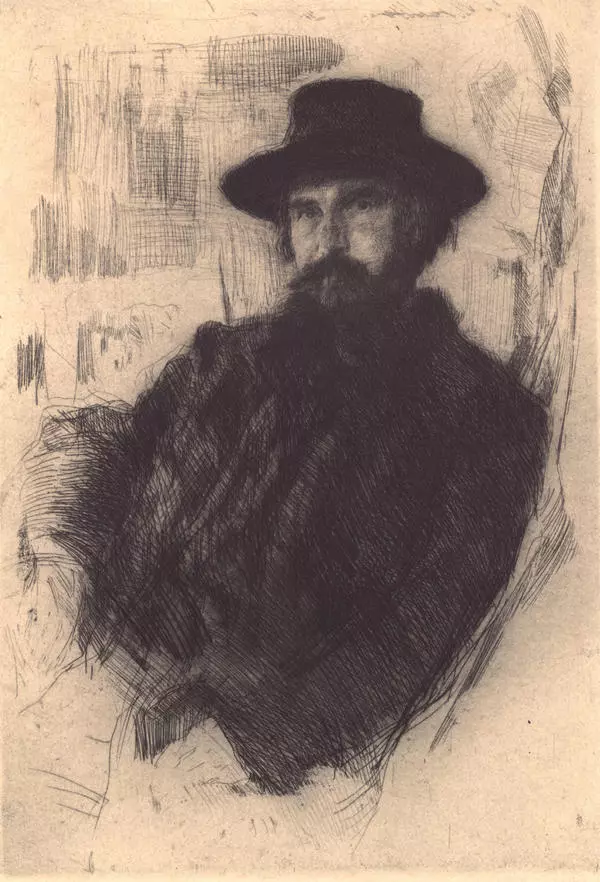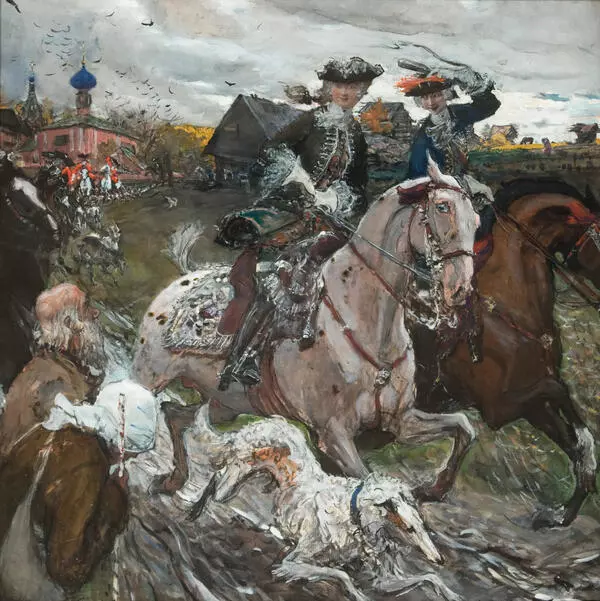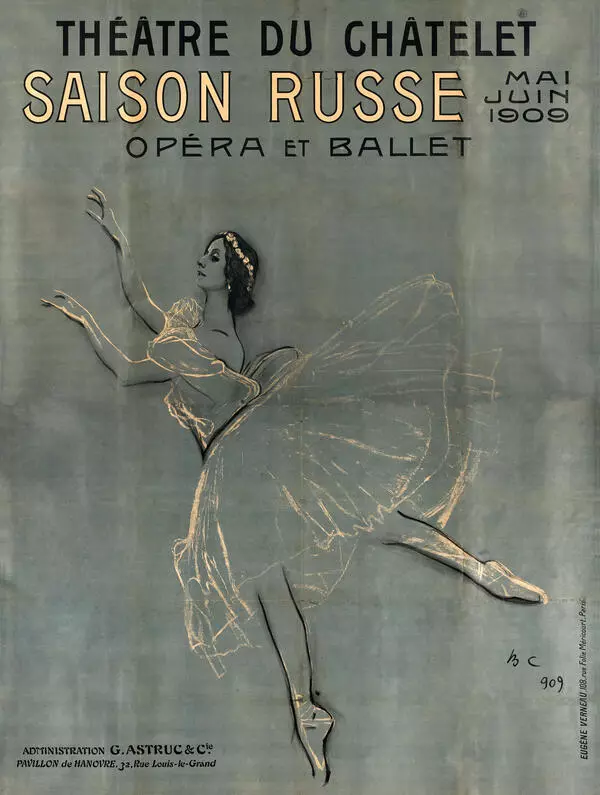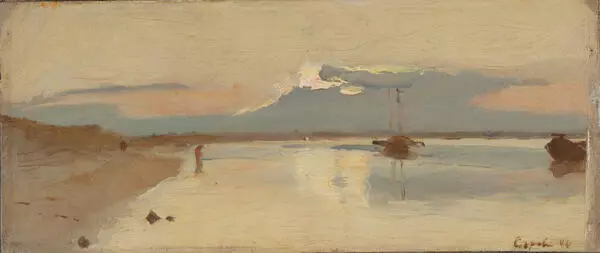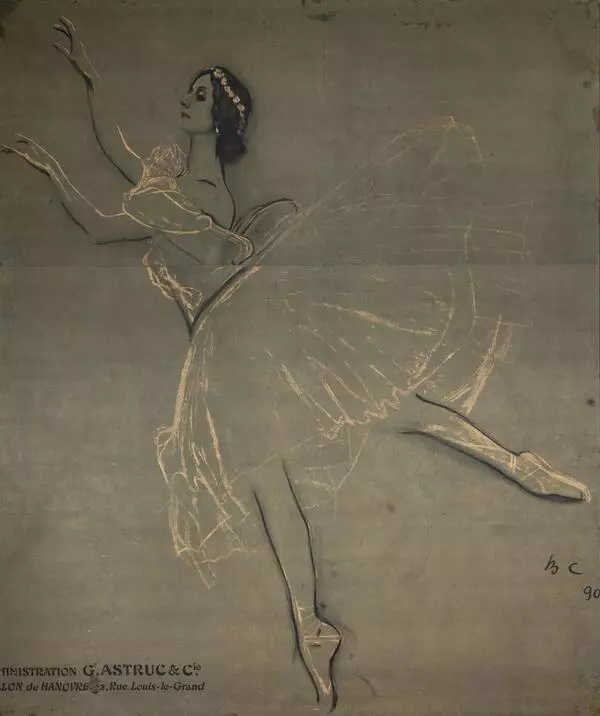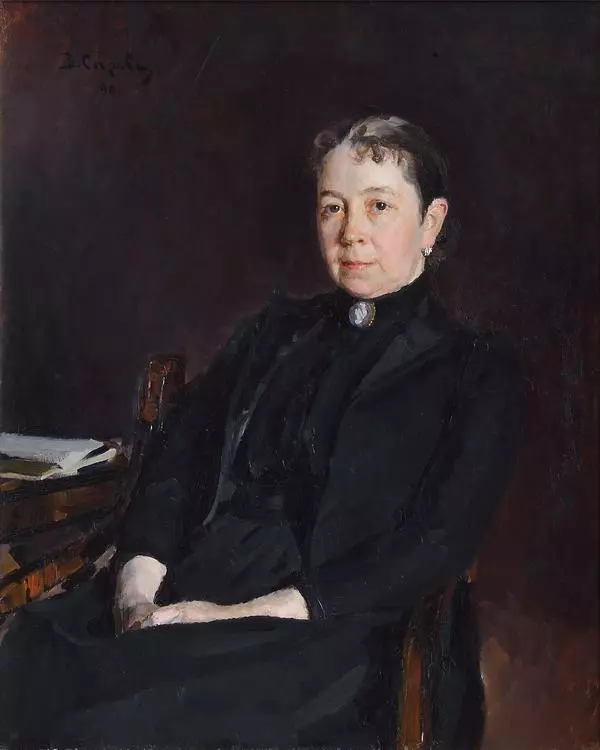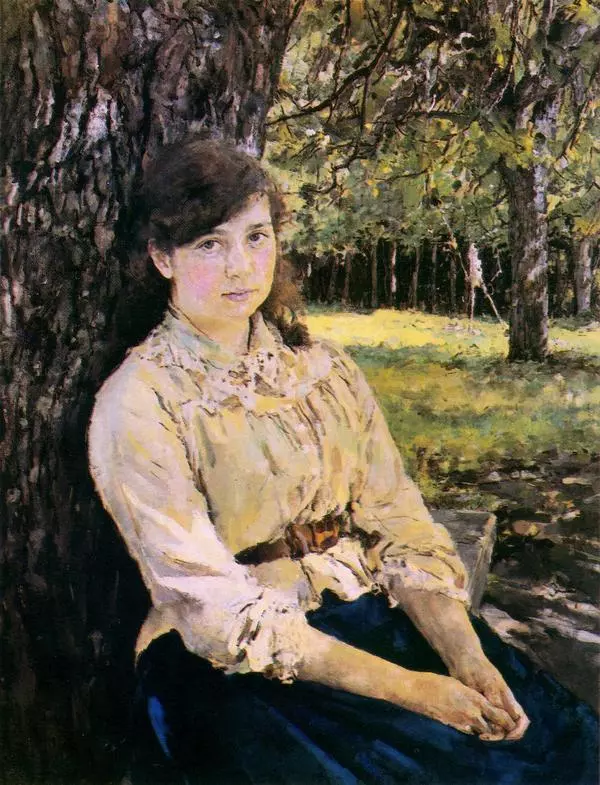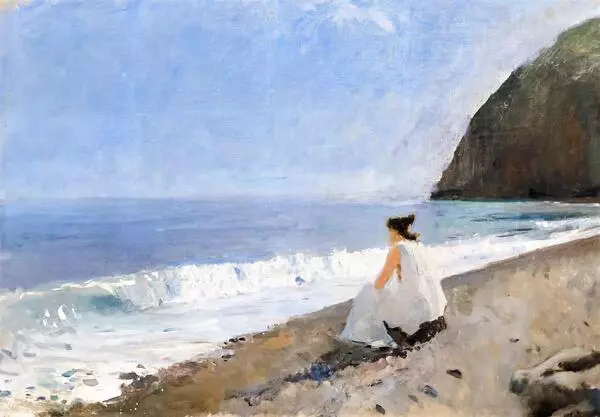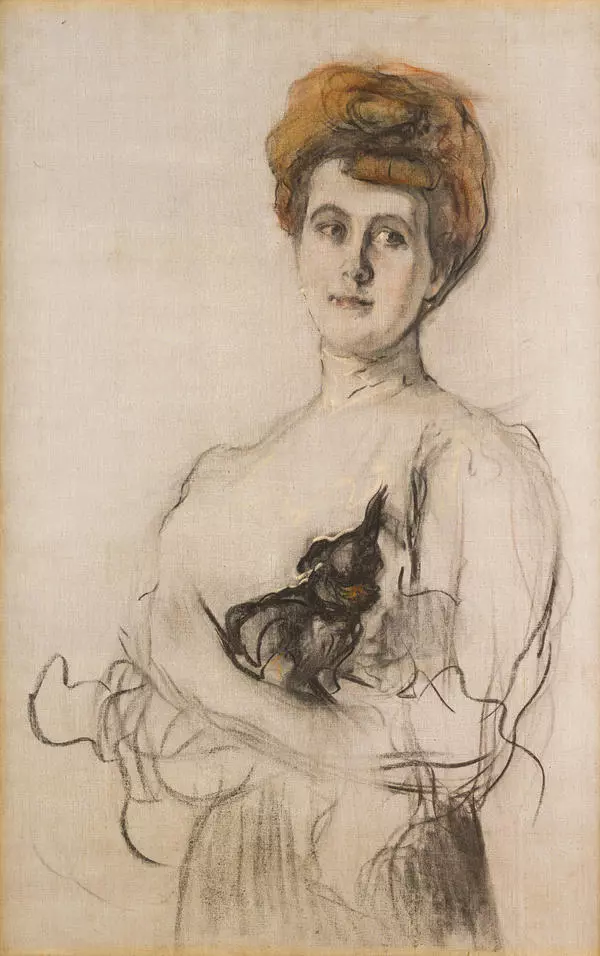Portrait of Emperor Alexander III is a posthumous portrait of the sovereign created in 1895 by the Russian painter, graphic artist, and portraitist Valentin Serov. The portrait was commissioned by the Emperor’s brother, the governor-general of Moscow, Grand Duke Sergei Alexandrovich.
This was not the first such commission for Serov. In 1892, together with the artist Konstantin Korovin, he won a competition to paint a portrait of the family of Emperor Alexander III in memory of his lucky escape in a railway crash on October 17, 1888 near the Borki railway station. The portrait was commissioned by Kharkov nobility. His first group portrait “Alexander III and his family” took nearly two years to paint, and the six figures were almost life-size. This was followed by new commissions for portraits of members of the imperial family.
The artist’s visual memory, his experience of previous work on the family portrait, and photographs by Sergey Levitsky taken in 1883 helped him in creating this posthumous portrait. Levitsky was one of the first court photographers to have the right to photograph Alexander III.
Serov painted a powerful figure of the Tsar in a dark general’s tunic by the light wall. His fist in a white glove, forcibly clutching the axelbant cord, stands out against the background of the uniform. The hard stare of his gray eyes from beneath his high forehead is unwavering. The emperor looks cramped in the framework of the canvas. One gets the feeling that the sovereign is still ruling over Russia.
In 1895, the portrait was finished and handed over to the customer. The Grand Duke placed his brother’s portrait in the Kremlin. However, after the tragic death of Sergei Alexandrovich on February 4, 1905, his widow Elizaveta Feodorovna gave the portrait to Alexander III’s son, Emperor Nicholas II.
As the German invasion of Russia broke out in 1941, the portrait was evacuated to be returned after the war to the town of Pushkin (Tsarskoe Selo). For many years the portrait was kept first in the Central Storage Facility of Museum Collections, and then in the collection of the Pavlovsk Palace Museum. And it was only in 2010, on the occasion of the 300th anniversary of Tsarskoe Selo, that the portrait of Emperor Alexander III was returned to its original place in the State Study of the Alexander Palace.
This was not the first such commission for Serov. In 1892, together with the artist Konstantin Korovin, he won a competition to paint a portrait of the family of Emperor Alexander III in memory of his lucky escape in a railway crash on October 17, 1888 near the Borki railway station. The portrait was commissioned by Kharkov nobility. His first group portrait “Alexander III and his family” took nearly two years to paint, and the six figures were almost life-size. This was followed by new commissions for portraits of members of the imperial family.
The artist’s visual memory, his experience of previous work on the family portrait, and photographs by Sergey Levitsky taken in 1883 helped him in creating this posthumous portrait. Levitsky was one of the first court photographers to have the right to photograph Alexander III.
Serov painted a powerful figure of the Tsar in a dark general’s tunic by the light wall. His fist in a white glove, forcibly clutching the axelbant cord, stands out against the background of the uniform. The hard stare of his gray eyes from beneath his high forehead is unwavering. The emperor looks cramped in the framework of the canvas. One gets the feeling that the sovereign is still ruling over Russia.
In 1895, the portrait was finished and handed over to the customer. The Grand Duke placed his brother’s portrait in the Kremlin. However, after the tragic death of Sergei Alexandrovich on February 4, 1905, his widow Elizaveta Feodorovna gave the portrait to Alexander III’s son, Emperor Nicholas II.
As the German invasion of Russia broke out in 1941, the portrait was evacuated to be returned after the war to the town of Pushkin (Tsarskoe Selo). For many years the portrait was kept first in the Central Storage Facility of Museum Collections, and then in the collection of the Pavlovsk Palace Museum. And it was only in 2010, on the occasion of the 300th anniversary of Tsarskoe Selo, that the portrait of Emperor Alexander III was returned to its original place in the State Study of the Alexander Palace.


